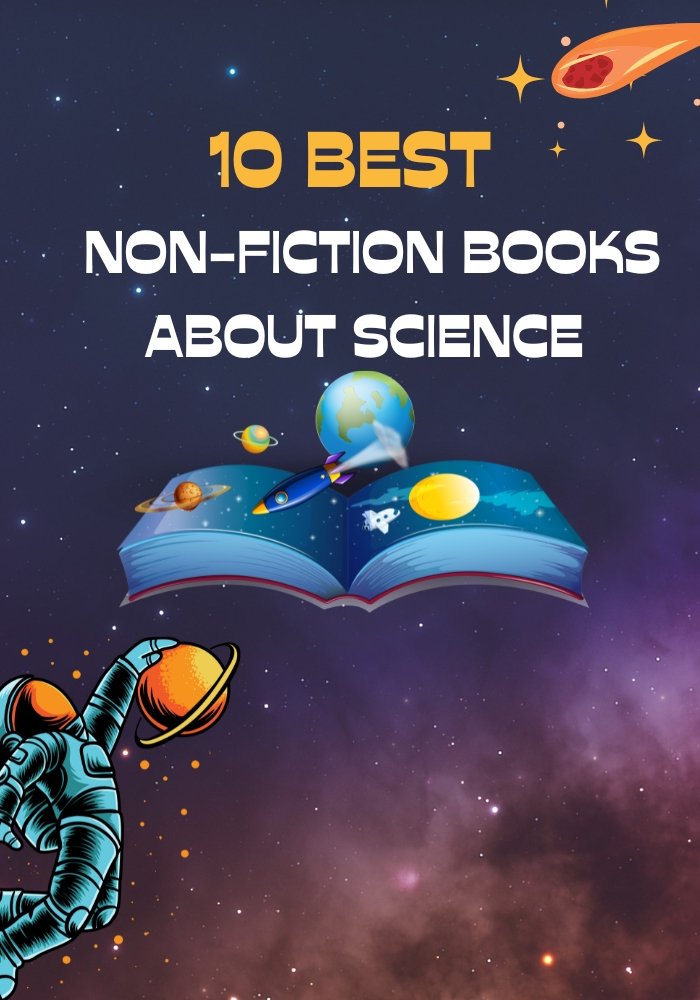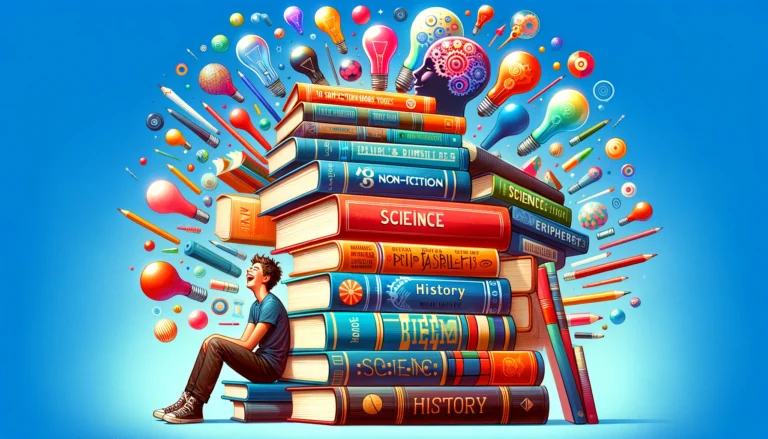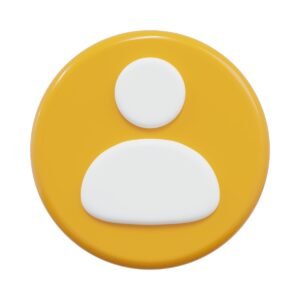Introduction
Science invites curious minds to uncover its wonders, offering insights and discoveries. This collection of ten non-fiction books is a treasure for those eager to understand our universe. These books delve into themes from the mysteries of atomic particles to the expanses of the cosmos and the intricacies of human relationships. Each book presents a unique perspective and fascinating insights. Ready to embark on a journey of discovery? Let these ten remarkable books guide you into the captivating world of science.
1. “The Joy of Science” by Jim Al-Khalili

In “The Joy of Science,” Jim Al-Khalili guides readers through the excitement of scientific discovery. This book extends beyond mere storytelling; it’s an invitation to explore groundbreaking moments in fields like quantum physics and cosmic mysteries. Al-Khalili’s clear explanations and engaging anecdotes demystify complex theories, making them accessible to everyone. He skillfully blends detailed examples, such as the behavior of particles at quantum level, with a narrative that sparks curiosity. This approach not only educates but also captivates those eager to grasp the scientific wonders of our universe, making it an enlightening read for enthusiasts and scholars alike.
2. “Insectpedia: A Brief Compendium of Insect Lore” by Eric R. Eaton

“Eric R. Eaton’s ‘Insectpedia’ brings the intricate world of insects to life, showcasing their crucial roles in our ecosystem. Through detailed examples, such as the monarch butterflies’ remarkable migration and beetles’ ingenious defense strategies, Eaton not only informs but also fascinates. Each story reveals why these insects are essential to environmental balance, highlighting their adaptability and resilience. ‘Insectpedia’ invites readers to explore these narratives and gain a fresh perspective on nature’s small yet significant architects. Delve into this book and discover the unexpected wonders and the profound impact of insects.”
3. “Waste: One Woman’s Fight Against America’s Dirty Secret” by Catherine Colman Flowers

In “Waste: One Woman’s Fight Against America’s Dirty Secret,” Catherine Colman Flowers reveals the critical waste management failures impacting marginalized communities across the United States, from Alabama’s Black Belt to urban centers like Detroit. Through a mix of investigative journalism and personal activism, Flowers presents harrowing accounts of the health and environmental crises stemming from these failures. The book not only educates but also serves as a call to arms, challenging readers: What will you do to combat this injustice? Flowers’ powerful narrative urges us to take immediate action, emphasizing that indifference exacerbates these life-threatening issues. Join her in advocating for systemic change.
4. “Explaining Humans: What Science Can Teach Us about Life, Love, and Relationships” by Dr. Camilla Pang

In “Explaining Humans,” Dr. Camilla Pang employs her unique perspective as a scientist with autism to demystify human behavior. Through the precise lens of science, she examines complex topics such as love, conflict resolution, and social interactions, utilizing theories from biology and psychology. For instance, Pang applies the principles of game theory to relationship dynamics, offering readers a novel way to understand and navigate their personal interactions. Her methodical approach not only makes intricate concepts accessible but also highlights the value of diverse viewpoints in enriching our understanding of human nature. Dr. Pang’s book invites us to foster empathy by seeing the world through the eyes of both a scientist and an individual on the autism spectrum.
5. “Entangled Life: How Fungi Make Our Worlds, Change Our Minds & Shape Our Futures” by Merlin Sheldrake

Merlin Sheldrake’s “Entangled Life” masterfully reveals the vital role of fungi in our ecosystem through engaging narratives that make complex scientific concepts accessible. Sheldrake vividly details processes like how mycorrhizal fungi intricately connect with plant roots to boost their growth, directly linking these phenomena to broader themes of environmental sustainability. He skillfully connects fungal activities with daily human life, emphasizing their role in agriculture, medicine, and biotechnology, thus highlighting their ubiquitous impact. This book stands out by not only detailing biological facts but also by inspiring a reevaluation of our ecological relationships. Sheldrake’s work is a compelling invitation to explore a hidden, yet crucial, part of our natural world.
6. “Gödel, Escher, Bach: an Eternal Golden Braid” by Douglas Hofstadter

Douglas Hofstadter’s “Gödel, Escher, Bach: an Eternal Golden Braid” intricately connects the intellectual paths of Kurt Gödel, M.C. Escher, and Johann Sebastian Bach. Through discussions on loops, recursions, and self-references, Hofstadter showcases how these elements weave through mathematics, art, and music to challenge our understanding of consciousness. A standout feature is the book’s dialogues, styled after Lewis Carroll, which cleverly break down complex ideas into engaging conversations. Hofstadter doesn’t just cross disciplinary boundaries; he redraws them, offering a richer, interconnected understanding of how thought works. Personally, the playful yet profound dialogue sections not only clarified but also deepened my appreciation for theoretical concepts, making the abstract accessible and impactful. This book reshapes not just our knowledge but our very way of thinking.
7. “What If: Seriously Scientific Answers to Absurd Hypothetical Questions” by Randall Monroe

Randall Monroe’s “What If” uniquely explores absurd scientific queries, such as calculating the impact of a diamond bullet, showcasing a rare blend of scientific accuracy and creativity. Each chapter delves into fields like physics and chemistry with a freshness that diverges from typical textbook narratives, using humor and unexpected scenarios to highlight the bizarre consequences of theoretical questions. Monroe’s method, which integrates clear explanations with playful illustrations, transforms mundane topics into captivating discussions, prompting readers to ponder scientific principles in their everyday surroundings. While the book brilliantly demystifies complex ideas, its highly speculative nature might occasionally challenge the limits of plausibility for some readers, potentially deterring those who prefer strictly empirical discussions.
8. “Humble Pi: A Comedy of Maths Errors” by Matt Parker

Matt Parker’s “Humble Pi” offers a comedic yet profound exploration of mathematical errors that have shaped history and everyday life. Parker employs a unique blend of irony and sharp wit to dissect blunders like the infamous Mars Climate Orbiter mishap, where a simple unit conversion error led to a $125 million loss. Through stories like this, he illustrates how mathematics reflects our human vulnerabilities and our capacity for problem-solving. One standout explanation includes the London Millennium Bridge wobble, which Parker clarifies in terms that resonate with anyone who’s experienced unexpected instability, metaphorically or physically. While the book effectively demystifies daunting concepts, its humorous take might not cater to those seeking a more serious analysis. However, Parker masterfully connects abstract mathematical principles to tangible aspects of daily life, enhancing readers’ appreciation for the pervasive role of math in shaping our world.
9. “Pandora’s Lab: Seven Stories of Science Gone Wrong” by Paul A Offit

Paul A. Offit’s “Pandora’s Lab” delves into the unforeseen repercussions of scientific discovery with an intense narrative that draws on diverse sources like historical documents and expert interviews. Offit offers detailed accounts, such as the story of the introduction of kudzu to the U.S., initially intended to prevent soil erosion but ultimately becoming an ecological nightmare. Through such narratives, he vividly portrays the thin line between scientific ambition and its potential havoc, challenging readers to consider the ethical implications of unchecked innovation.
Offit’s prose is sharp and evocative, particularly when describing the cascading effects of these missteps, which he breaks down with precise analysis, making complex scenarios accessible and compelling. For instance, his examination of the radium girls’ tragedy combines personal anecdotes with scientific critique, underscoring the human cost of scientific ignorance and arrogance. Offit advocates for a balance between innovation and humility, using historical lessons to highlight the potential consequences of losing this equilibrium.
The book concludes not with easy answers but with a call to reflect on our scientific pursuits, urging a cautious approach to innovation in light of historical lessons. “Pandora’s Lab” serves as a potent reminder of the heavy responsibility carried by scientific knowledge, aiming to foster a critical understanding of its impact on the future.
10. “Stiff: The Curious Life of Cadavers” by Mary Roach

Mary Roach’s “Stiff” provides an intriguing and distinctly unconventional journey through the post-mortem utility of human bodies. Roach’s narrative stands out due to her focus on the less-discussed, often macabre aspects of medical science, peppered with humorous insights, such as her quip about crash test dummies and their “living” counterparts—cadavers. This humor helps balance the inherent grimness of the subject.
Her exploration is underpinned by meticulous research, including attending autopsies and visiting crash test sites, which showcases her commitment to uncovering how cadavers contribute across various fields, from safety engineering to surgical practice. Roach delves into the unexpected ways cadavers have improved car safety, presenting a compelling case that intertwines technical detail with impactful human stories.
Roach’s book transcends mere educational content by weaving philosophical musings on life and death into each chapter, challenging readers to reconsider their views on the human body after death. Through personal anecdotes and thought-provoking scenarios, she prompts a deeper reflection on our mortality and the ethical dimensions of using human remains in research.
In “Stiff,” Roach not only invites readers to face their fears about death but also guides them through these reflections with a mix of stark realities, ethical questions, and alleviating humor, making the topic approachable and engaging. She illustrates the dignity in scientific study of cadavers, ensuring the humanity of the subjects is honored, transforming a potentially uncomfortable subject into a profound exploration of life’s continuity.
Conclusion
Science, at its core, is a ceaseless journey into the unknown, a tireless exploration of the ever-unfolding mysteries that define our universe. These ten books capture the spirit of this exploration, each illuminating a different aspect of the vast spectrum of scientific inquiry—from the quantum intricacies to the expansive cosmic mysteries. For example, one delves into the subtleties of quantum mechanics, while another unravels the broader narratives of cosmology.
These works celebrate not only the beauty of questioning but also the transformative power of curiosity. They exemplify this through vivid narratives, like a discussion in one book that turns a simple scientific query into a profound insight about human connectivity. They remind us that in science’s embrace, we discover not just answers but a deeper appreciation for the questions themselves. One poignant moment in a featured book shows how a single query about particle physics opened up discussions about the universe’s very fabric.
Let these ten masterpieces be your guides in embracing the mysteries of science and embarking on your own intellectual adventure. They not only expand our knowledge but also connect us more deeply with the world, challenging us to see beyond the surface. As you turn their pages, let them rekindle your sense of wonder and inspire you to think more deeply about how science touches every aspect of our lives.






